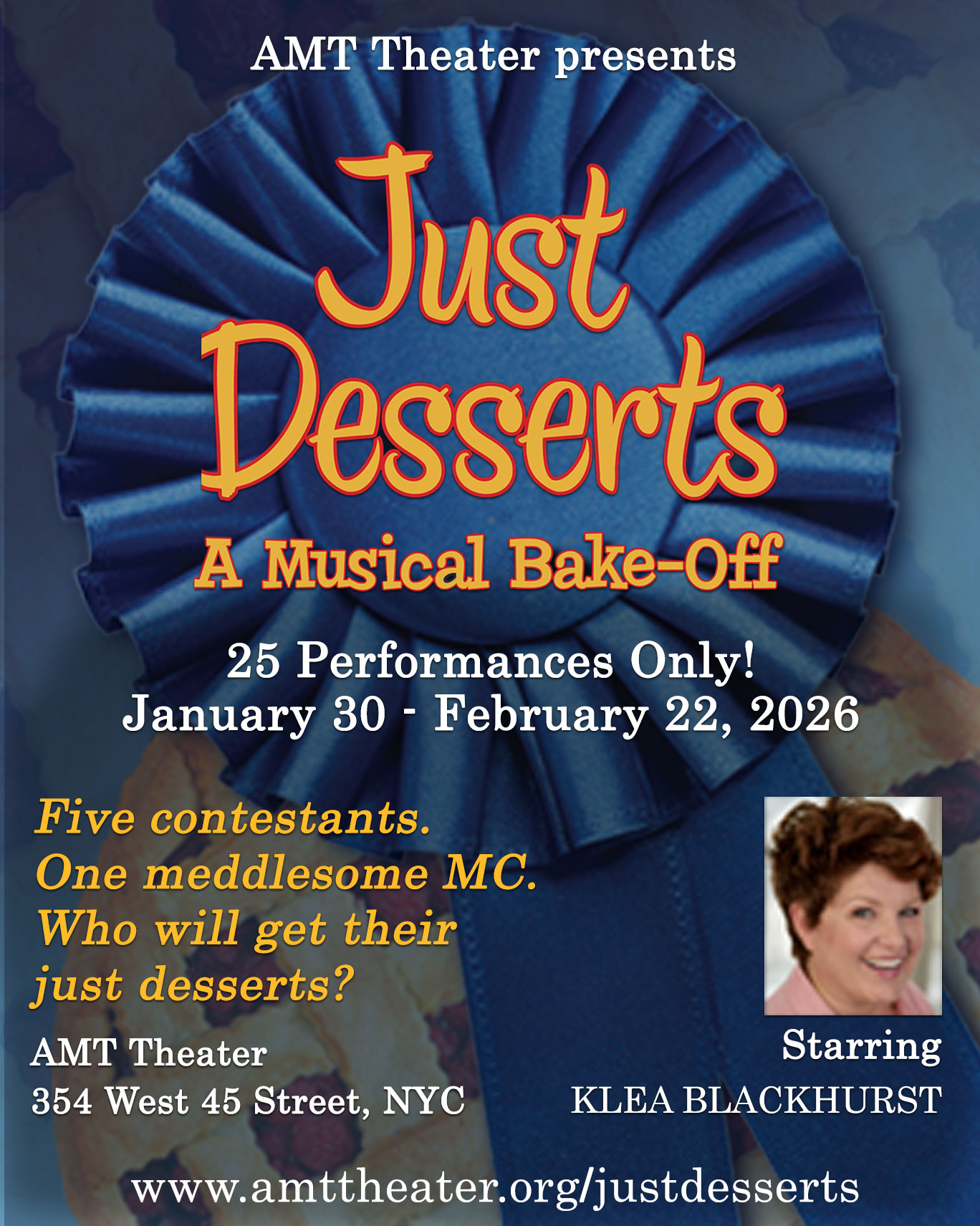By Alix Cohen
The 19th Annual United Solo Festival launches October 14 and continues through November 23. Its roster of one person pieces written predominantly by each show’s performer, features drama, comedy, music, singing, storytelling, dance, multi-media, and improvisation.
Artists presented at this smorgasbord of original theater come from 20 states, Puerto Rico, the District of Columbia as well as Australia, Italy, Mexico, Singapore, and the United Kingdom. Two to eight shows a day are presented, a few partially in Spanish, Chinese, and Polish, as well as English.
This is a great opportunity to see intimate theater. Shows can be entertaining, elucidating and often captivatingly personal. A single Broadway admission would pay for a cornucopia of these with no one lining their pockets. Shows are given the opportunity for broad exposure generating possible future productions.
The festival concludes on Sunday, November 23, with its traditional Grand Gala held, like the plays, at Theatre Row. Outstanding festival productions are awarded. The United Solo Special Award will be presented to an artist who has promoted the genre of solo performance beyond the festival. Past recipients include John Leguizamo, Bette Midler, Michael Moore, Charles Busch…
Tickets and the full schedule are available at: https://unitedsolo.org/the-19th-annual-united-solo-theatre-festival/
A sampling of the variety:
Elizabeth I: In Her Own Words
By Carole Levin and Tammy L. Meneghini
Performed by Tammy L. Meneghini
Directed by Sabin Epstein
Friday, October 31, 2025 at 7:00 pm
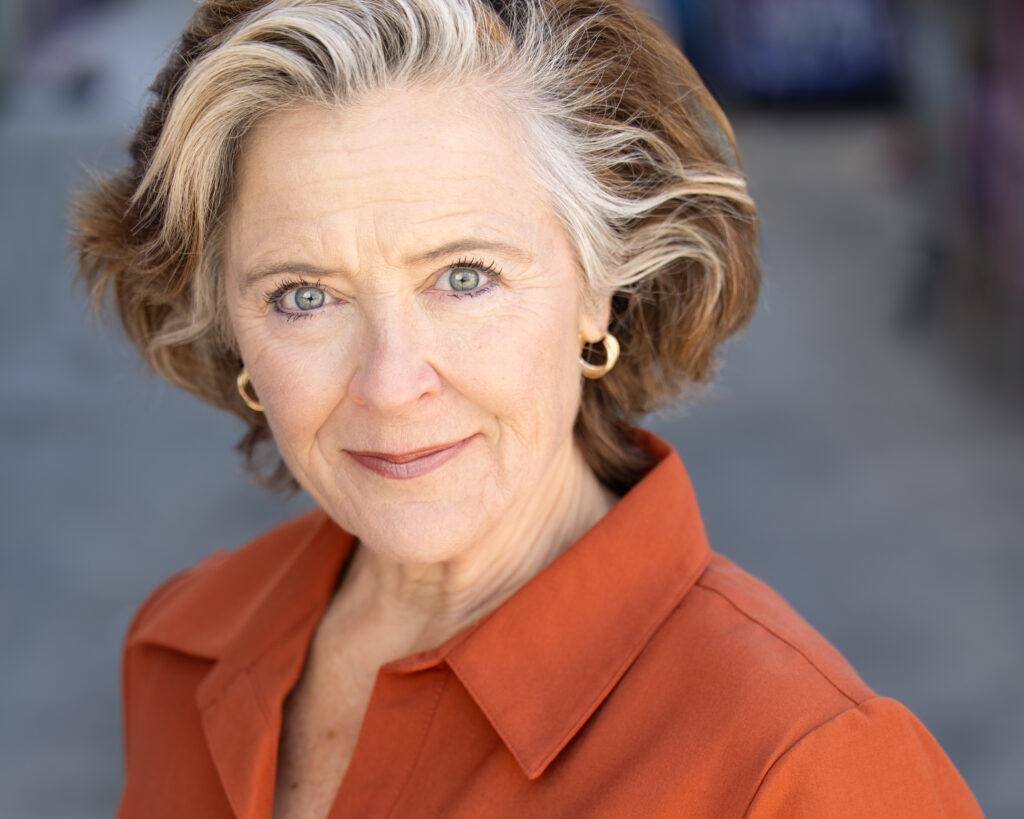
Tammy L. Meneghini is a classical actress, teacher of acting and dialects, and playwright. Having left New York for Lincoln Nebraska after 9/11, she found herself teaching in the same city as leading Elizabeth I historian, Carole Levin. The Tudor era organically drew Tammy because of immersion in Shakespeare. She reached out, subsequently developing an Elizabethan Salon project, a Period Styles Performance class.
Relocated to Colorado University Boulder, Tammy was invited to imagine a theater pairing to go with an exhibit of the touring First Folio from the Folger Library. She invited Carole to give some talks. The historian suggested a two character play illuminating the distaff side of Elizabeth’s reign. Reworking the piece into a solo made it easier travel. In 2023 a local producer suggested going to the Edinburgh Fringe Festival. Working with director, Sabin Epstein, Tammy developed yet another iteration.. Elizabeth I sold out its run in Scotland.
Elizabeth never expected to be queen. Her path to the throne was riddled with uncertainty, political danger, and shifting legitimacy. After her mother Anne Boleyn was executed in 1536, Elizabeth was declared illegitimate by her father, Henry VIII. This removed her from the official line of succession. Edward VI became king at 9. Mary I, Elizabeth’s half sister, succeeded to the throne, but died childless in 1558. Elizabeth was the next viable heir.
Entering a nest of misogyny and treachery at 25, the young woman held onto her power against the odds. “She knew how to play the game,” Tammy notes. The queen stayed single in a patriarchal society. Declaring herself “married to England”, she made sure she didn’t become subordinate to a man while evolving into a source of national pride for her dedication.
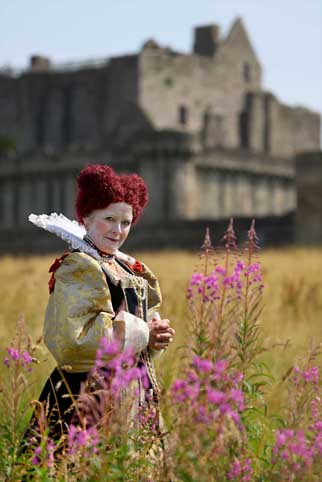
Colin Hattersley Photography
Her reign, called “The Golden Age,” was marked by extraordinary cultural, political, and economic flourishing. The play starts when Elizabeth is 15 and takes us through to her death. We, the audience, a group of her intimates, meet the year she passed, invited to the Privy Chamber to hear a last testimony. There’s no fourth wall. Much of the story arrives in the queen’s own words through letters and speeches. Shakespearean quotes dramatize.
“Men of her time worked so hard to create her image, her iconography…We know the famous stories, but my play makes her real, human, “ Tammy says. “Through the course of narrative, the audience learns why she did what she did.” This was a vulnerable and fallible woman, one for whom Tammy exhibits both respect and affection. Costume, make-up, and speech have been researched. A guitarist accompanies. It sounds fascinating.
Ten Times I Should Have Known I Was Autistic
Written and Performed by Keith Varney
Directed by Derek Roland
November 4, 2025 at 7:00
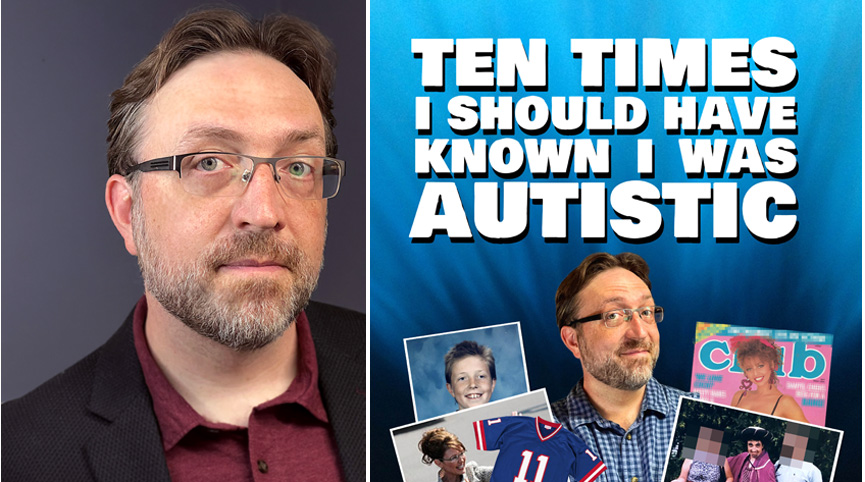
“Keith should have known that he was autistic/neodivergent, but he didn’t figure it out until he had a divorce under his belt and a potbelly over it.” (The author) Neurodivergence refers to the variations in how someone learns, processes, or behaves. One type of neurodivergence is autism, a condition characterized by challenges with social skills, speech, nonverbal communication and repetitive behaviors. (University of St. Augustine for Health Sciences)
Now in his mid forties, the (musical theater) writer has always struggled with lack of clear boundaries and social cues. Desperately looking for rules, stressed out, and admittedly unreasonable, it seemed to him that others were fluent in these things. During college, ground rules for “partying, drinking, hooking up” found him confused and isolated. Three decades of productive therapy and a divorce followed, but no one “connected the dots.”
About a year ago, his oldest friend identified as neurodivergent . Noting similarities, he suggested Keith might be as well. “So I did a whole bunch of research and met with a consultant.” Because he was what he calls “high-masking, low-support needs”, it never occurred to Keith his issues stemmed in a physiological source.
“When conflicted, I’m removed, watching it like a scene in a play,” he tells me. ‘It’s not something you can overcome, but one adapts.” His play takes us through revelation and subsequent life adjustment. “The practical change is communication. I no longer try to hide.” In fact, Keith often shares his spectrum disorder with collaborators or relationships early on.
“It’s like my age or sexual orientation…like operating systems. Some people are MACs some PCs.” What some might interpret as a warning, others welcome as a map. On this basis, he determines compatibility. The next therapist, he tells me, will be a specialist.
Artists are often neurodivergent and sometimes autistic. You may question lack of diagnosis and methodology or recognize yourself and others.
Dianna Dynamic- Memoirs of a Cyborg
Written and Performed by Bernadette Cranage
Directed by Lisa McCune
November 13, 2025 7:00
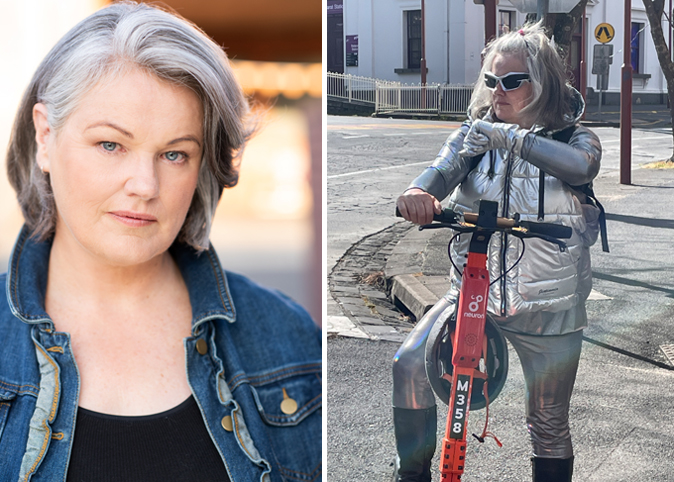
Headshot by Lisa McCune
Australian Bernadette Cranage is a trained actress with several solo shows under her belt. Inspiration for this piece apparently came from working at a police call-in crime center. She perceived those running the system as wielding great power. In her play, that dominion is represented by “The Machine… wealthy overseers who say they want to make the world work better.”
Dianna needed a hip and two knees…She was grieving and depressed about a life she saw as failure. The Machine tracked her leaving a surgical consult and offered (ignominiously by telephone) an “upgrade.” Replacing certain “parts”, she became a cyborg, part human, part machine, with a remunerative new job recruiting others.
She’s able to literally reset her own uncomfortable memories. Her body looks the same, not the least because this is a solo show, but becomes, in Bernadette’s words, “more efficient.” A “wacky” costume is meant to indicate her unusual nature as well as the melding of humanity with machine. There’s direct competition from another early prototype (referenced, not acted) and a potentially romantic relationship that doesn’t pan out.
We meet Dianna after seven months a cyborg. She’s overheard an alarming communication by The Machine and is forced to make a pivotal decision about her future.
Bernadette is not, as one might expect, a Sci-Fi fan. She hasn’t had the aforementioned operations, nor would she, if offered, become a cyborg. Of course, I asked. The play raises a great many questions.
Under the Rainbow
Written and Performed by John Gazzale
Winner Best One Man Show- United Solo Spring Festival 2025
Directed by Padraic Lillis
October 24, 2025 7:00pm
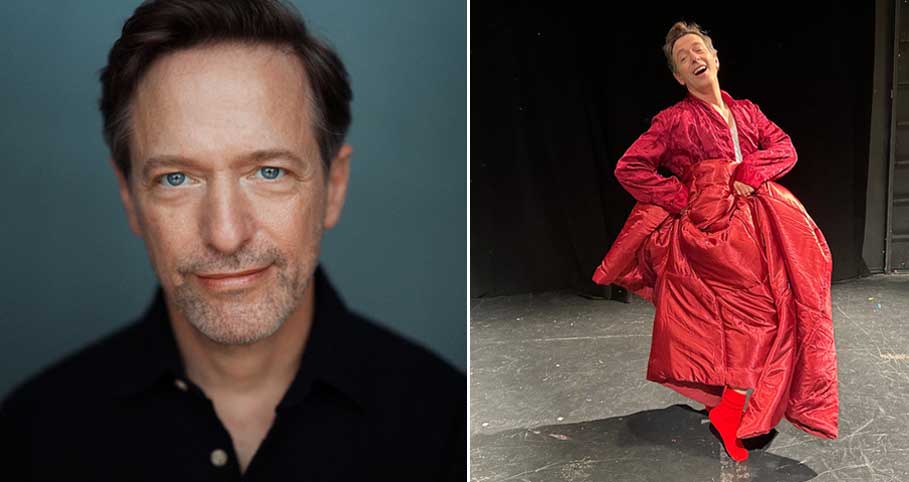
John Gazzale’s alter ego, Roger is, like him, a discouraged, out of work actor, somewhat bitter about the profession. Family doesn’t understand why he won’t make other choices. That he was “bullied, misunderstood, and punished” as a gay child compounds struggle with his sense of worth. There were no role models in his Virginia town, but John’s own parents were supportive. This is semi-fictional.
Like thousands of you, Roger’s tired of being asked what a stranger might’ve seen him in and hearing praise of peers. He wants fame, not just to be a working actor. Actor’s Equity has historically reported unemployment rates for actors hovering around 90%, reflecting the freelance and episodic nature of the profession. Fame will ostensibly solve everything.
A tornado hits New York. Roger is carried under (rather than over) the rainbow to a dark, forbidding theater. He suddenly sees and shares with us/the audience.
The character meets (acts) a famous prima ballerina and idol Judy Garland, the latter by way of a red brick road.* Judy offers an opportunity. There are costumes, props, a silent assistant. Gazzale sings. John tells me pointedly that female characters, even bewigged, are not meant to be drag- “not that there’s anything wrong with drag.”
When fame comes, it’s decidedly not what Roger expected. There’s no such thing as a free lunch? ‘A cynical or realistic point of view depending when you ask any actor. Change occurs. Perhaps the red brick road is abandoned for the yellow. It’s a journey. Circumstances are treated with heart and imagination.
*In the 1939 MGM film The Wizard of Oz, the beginning of the Yellow Brick Road is intertwined with a Red Brick Road. Both spiral out from the same point in Munchkinland, creating a visually striking pattern. The Red Brick Road is never mentioned in the film’s dialogue, nor is its destination explained—it simply veers off in a different direction.
Opening Photo-Elizabeth Blumenfield


